In a land where plein air painting is an unusual site, this artist is breaking multiple barriers.
I first discovered Edak Young on Instagram, when fellow artist Joe Gyurcsak shared a post of hers with Eric Rhoads, who then shared it with me. Ah, the benefits of social media! In this case, I’m grateful for the technology because Edak has an amazing story to share with all of us. I asked her a few questions about painting en plein air, how she handles curious onlookers, and more.
Read, enjoy, learn.
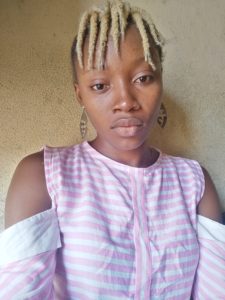
Q&A With Nigerian Artist Edak Young on Plein Air Painting
CherieDawn: How did you first get started painting, and specifically en plein air?
Edak: As a teenager, I had a keen interest in arts while in secondary school. At the time, I had a neighbor who was an artist, from whom I learned a lot. He gave me my first set of wax crayons and poster colors, with which I scribbled in all the ways I could. Those initial times were not all rosy with outcomes, in terms of how well my intended ideas turned out on paper. But I kept up the energy and tried harder.
With time and more effort, I got to see my works get clarity, which gave me the urge to study fine arts at the BA level. I wrote the entrance examinations and finally got admitted for the BA Visual Arts at Cross River University of Technology, Calabar, Nigeria, in 2010. Calabar is on the bottom left on the Nigerian map, close to Cameroon. The art school is also fairly new but rewarding.
In the art school from 2010 to 2012, I paid more attention to colors, objects, and subjects in and around the university campus. In my artistic studies and class assignments, I moved away from the crayons and started exploring with acrylics and oils on canvas. Much of this period was experimental, in which my explorations were diverse in subject matter and the technical use of colors to achieve imaginary, life, and still life compositions.
As part of the BA curriculum in Nigerian universities, there is a compulsory industrial attachment of one semester, which all candidates must fulfill. To make the most of the opportunity, I chose to travel from Calabar to do my industrial attachment in Lagos, about 900 kilometers away. It was during this industrial attachment in 2013 in the Universal Studios of Arts, Iganmu, Lagos, Nigeria, that I got introduced to painting en plein air.
In that first time, we were asked to go out and paint en plein air. While inserted in the community, painting, I found it very interesting communicating with my environment in real time using color. This was a whole lot different from the studio painting processes that I learned at school. This time, there was a richness that the free air, the presence and comments of people, and a sense of oneness with the environment gave to my painting. During that initial plein air experience, not being able to separate self from color and subject gave a whole new meaning to my work and practice.
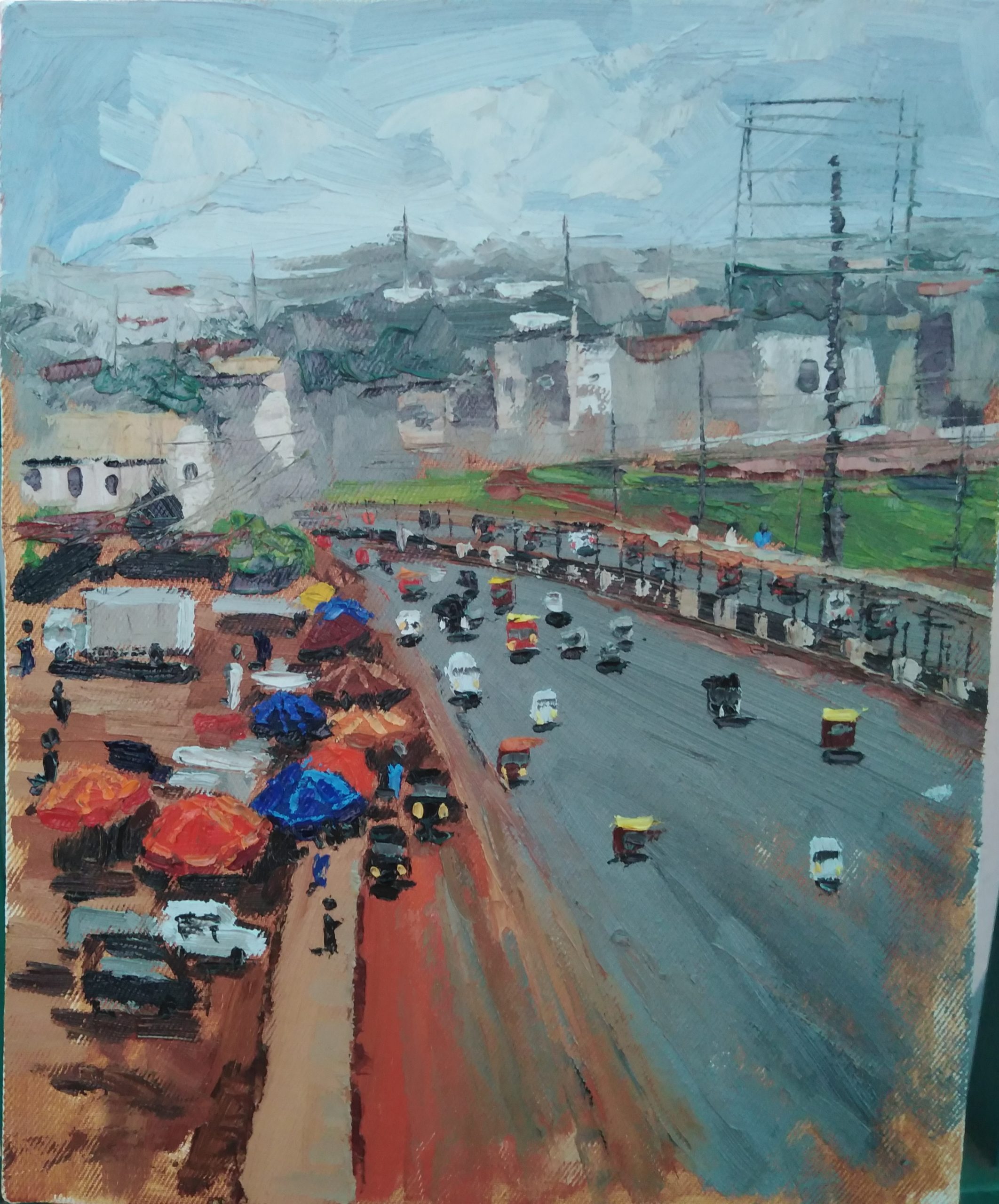
What inspires you to paint?
Generally, I have learned to think, talk, and dream in colors. In my mind, everything around me is broken down in colors. Somehow, I keep imagining the world without them. Each time I do that, there is a blankness, because I am unable to conceive a world without color. In my subconscious, I continually meditate on how two or more colors can be mixed and used as means of communication, and of expressing my outer and inner feelings about my environment.
In a certain sense, I am inspired by life’s experiences, nature, hues, and forms. I take note of all the fascinating shapes, colors, textures, vegetation, and topography around me. In my artistic notations about my environment, I do not merely take cognizance of the material environment. I also catalog and approximate the social and psychological environment in color. I believe nature is the strongest and most rewarding for artistic inspiration and it heals the soul of all that may ache, confuse, or confound.
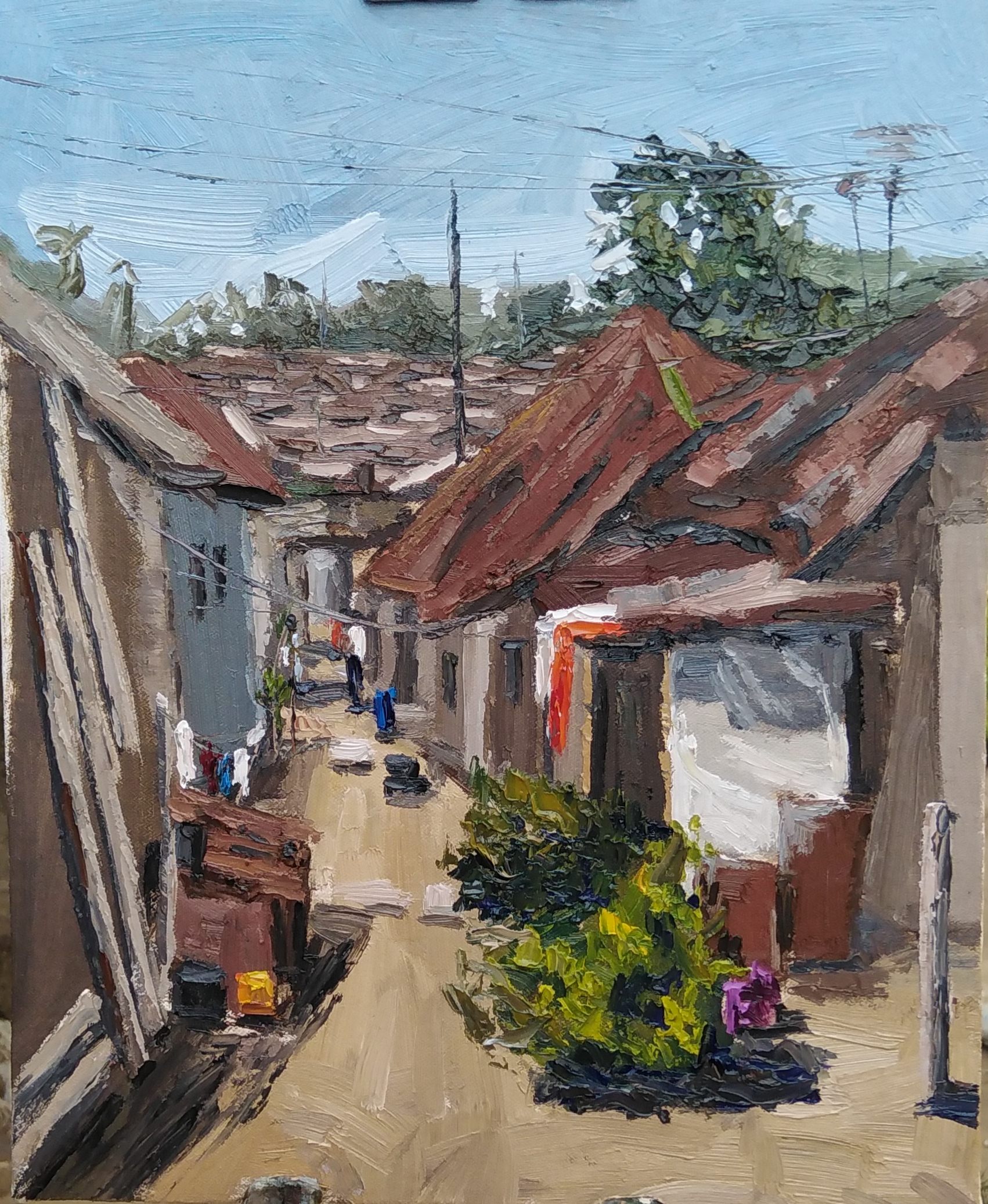
How do you feel about, or handle, curious onlookers?
At the initial time I started plein air painting, it was quite disturbing and exhausting multitasking, paying attention to spectators, answering numerous questions, and also painting. But with time I got to understand that lots of onlookers don’t know what I am doing, and that is why questions are asked.
I also got to understand that onlookers are an important component of the environment, just the way trees, mountains, winds, flowers, etc., are. It was easy for me to understand and get used to the fact that I am not only painting but also educating, so I learned to pay attention to their questions while painting, and also answer their questions as well.
During plein air painting, the wind blows and sways the trees, scatters leaves, transmits the aroma of flowers and the dusts of the hillsides and dirt roads. This is nature communicating and the artist responding by perceiving. In the same way, onlookers in the plein air process do communicate, and the artist needs to perceive and respond, as part of the art-making process.
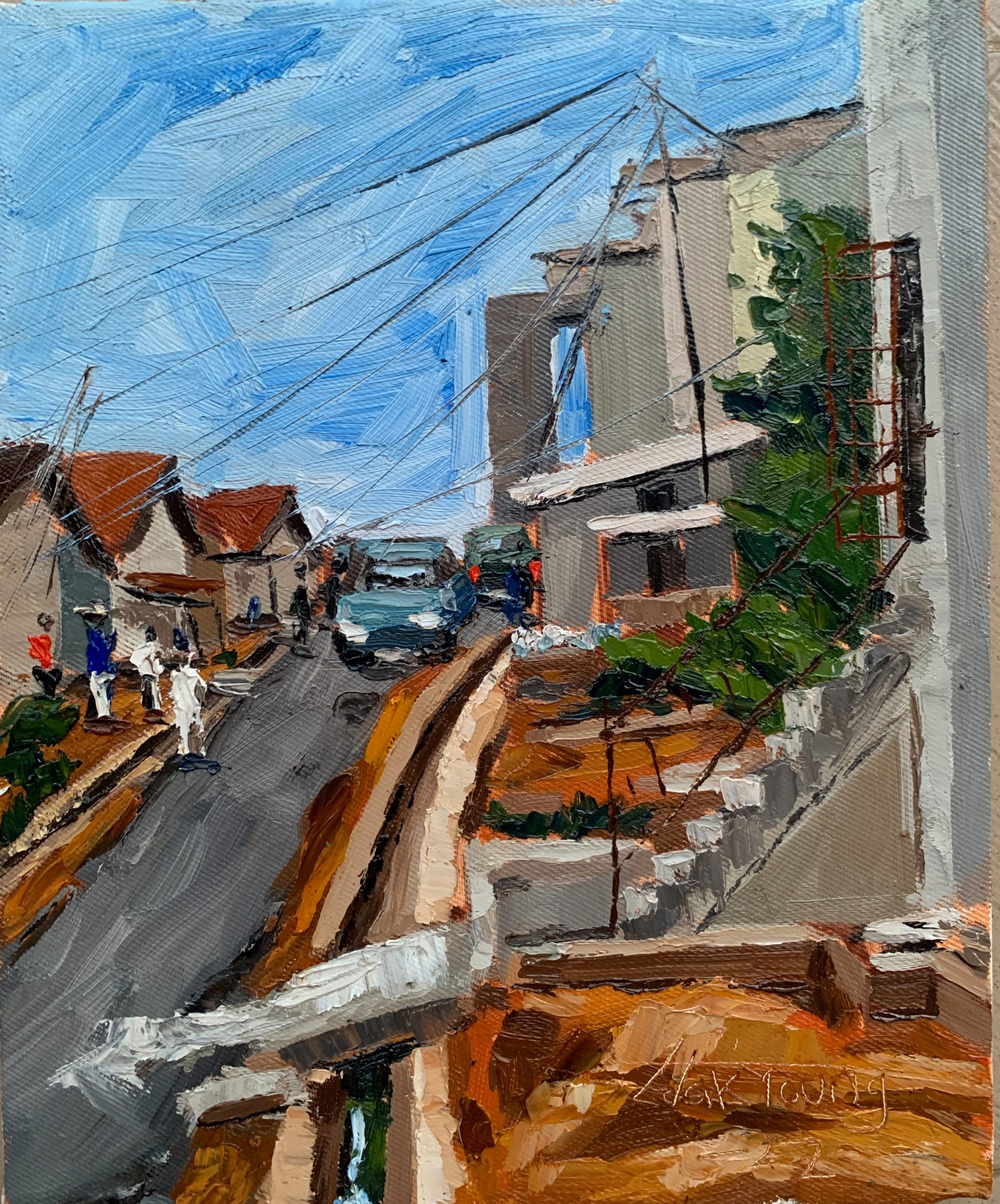
What’s the most common thing you hear when painting on location?
Onlookers are very fascinating during the plein air painting sessions. I live in a male-dominated society where gender roles are more or less strict and defined. So it is often the question that many onlookers express astonishment that a girl is painting at all, or that a female is standing so affirmatively in the environment and taking charge of a social artistic process with an effectiveness that they can actually see on the canvas.
In my experience, these types of social nuances have been very common and expressed in different ways, verbal and nonverbal. Some of the more ubiquitous questions onlookers ask are: “Can you draw me?” “Do people actually do this?” “I thought it was machines that do paintings.” Also, some onlookers tend to be a bit more inquisitive in saying, “I really have to stick around to see the end product,” while others keep asking why I chose to be an artist or why not just maintain the regular studio way of art production.
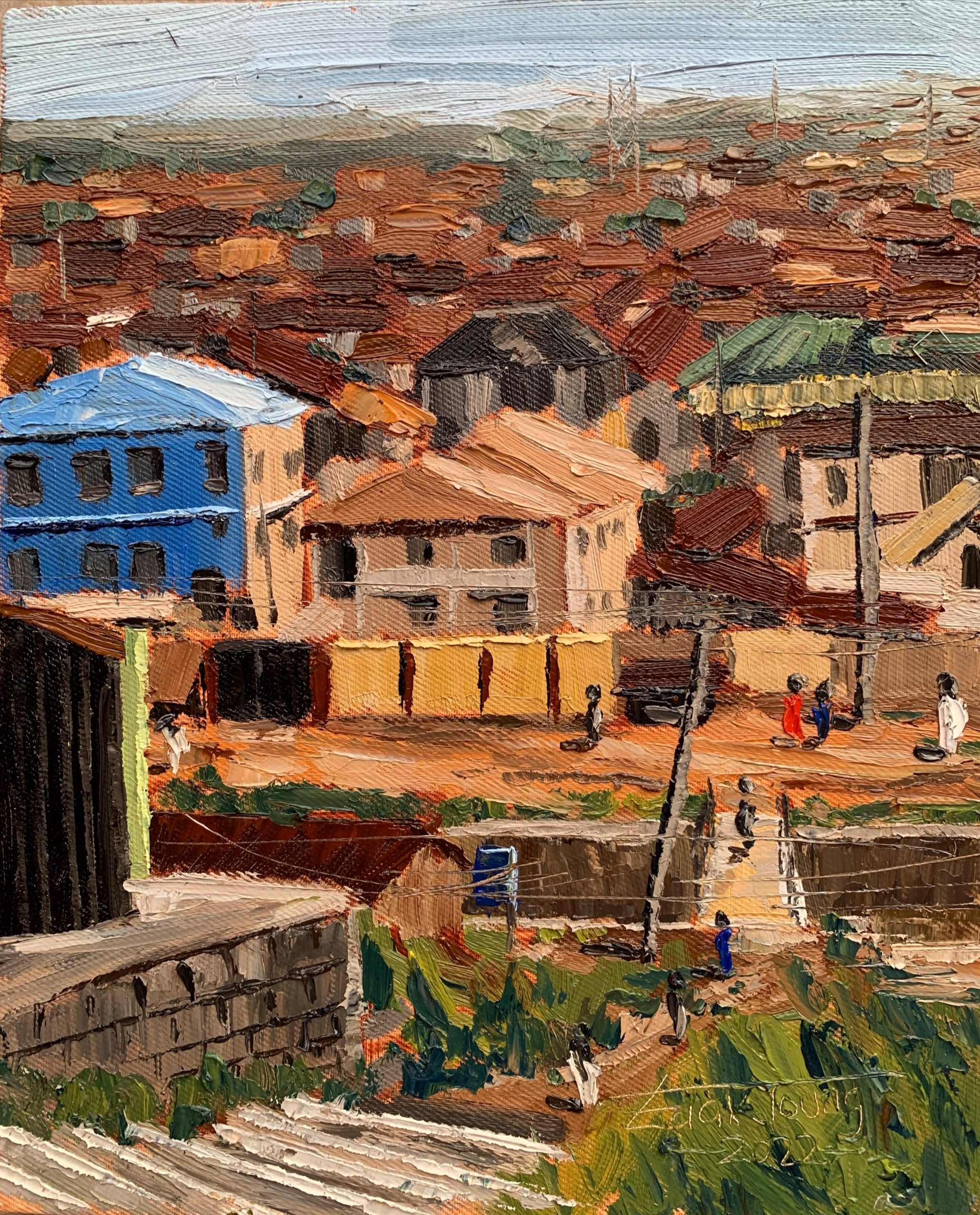
What’s one of your most memorable experiences?
During a plein air session in Yenagoa on October 1, 2021, a man walked up to me and asked me to pack up my equipment and leave the venue. He gave no concrete reason for his hostility. Now, Yenagoa is the capital city of Bayelsa State, the heart of Nigeria’s often turbulent Niger Delta region, where there are agitations for the control of oil wealth. Thus, forms of violence and security-consciousness are rife in the locality.
The man, a security personnel of sorts, was merely overreacting, and constituted my presence as a “security risk.” But I had other youthful spectators around me that were already engrossed in my painting processes. They got upset, protested and stood up for me, and chased the security man away. My plein air at that location went smoothly with no further obstructions.
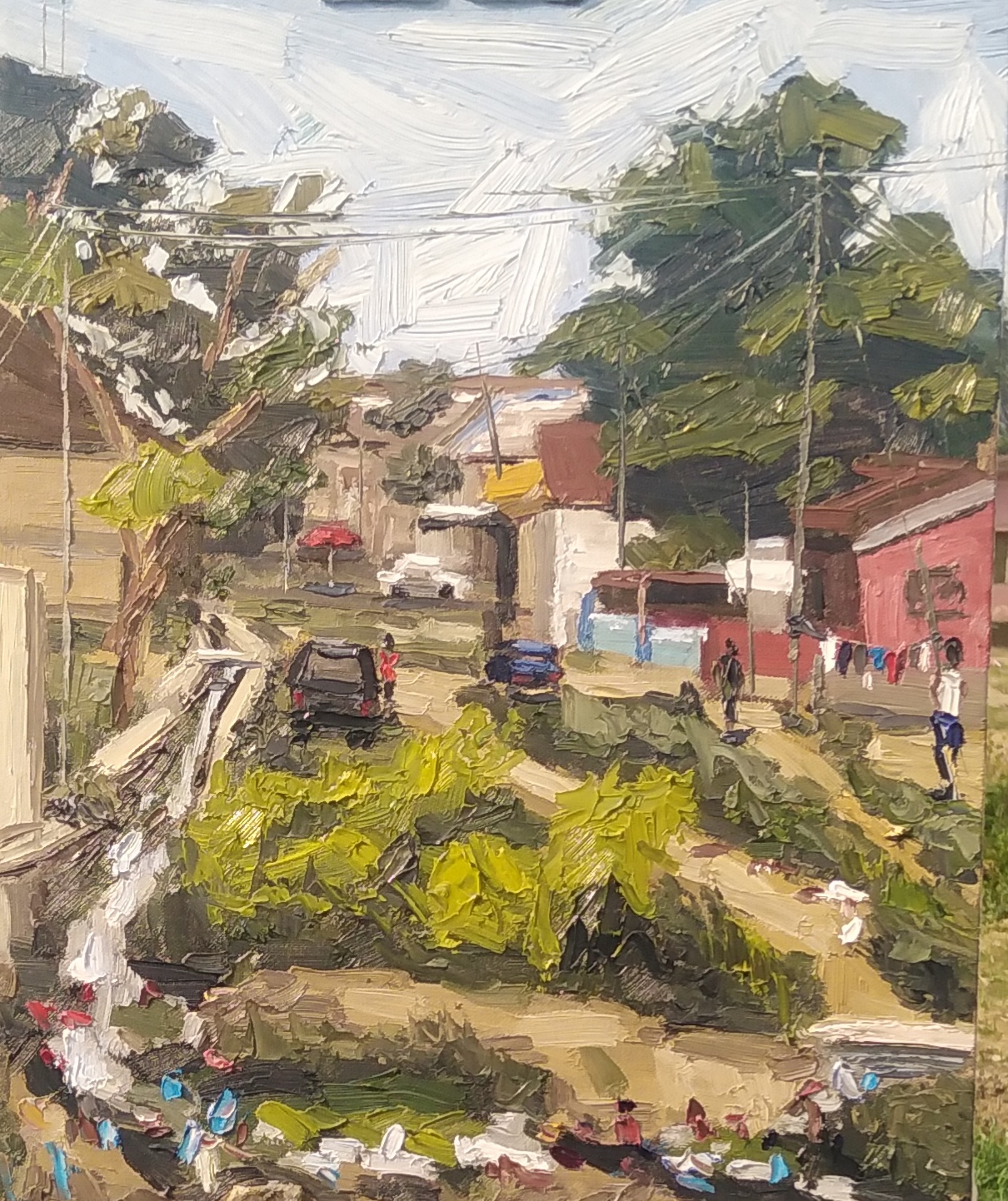
In your bio, it says you work interactively with the community. Can you tell us more about that?
In most of my plein air sessions, I spend four to six days painting different locations in a specific community. With that I get more involved with the people, interact with them, and tend to understand the little things about the community. As I work, they talk with me and I with them. In our interactions, we share ideas, using their fascinations with my work.
While they learn more about art and my processes, I learn about their community, and we together appreciate the beauty in nature. Thus, while unique elements of their environment are being artfully documented within a mutually rewarding context, their verbal and social expressions tend to become one with my colors.
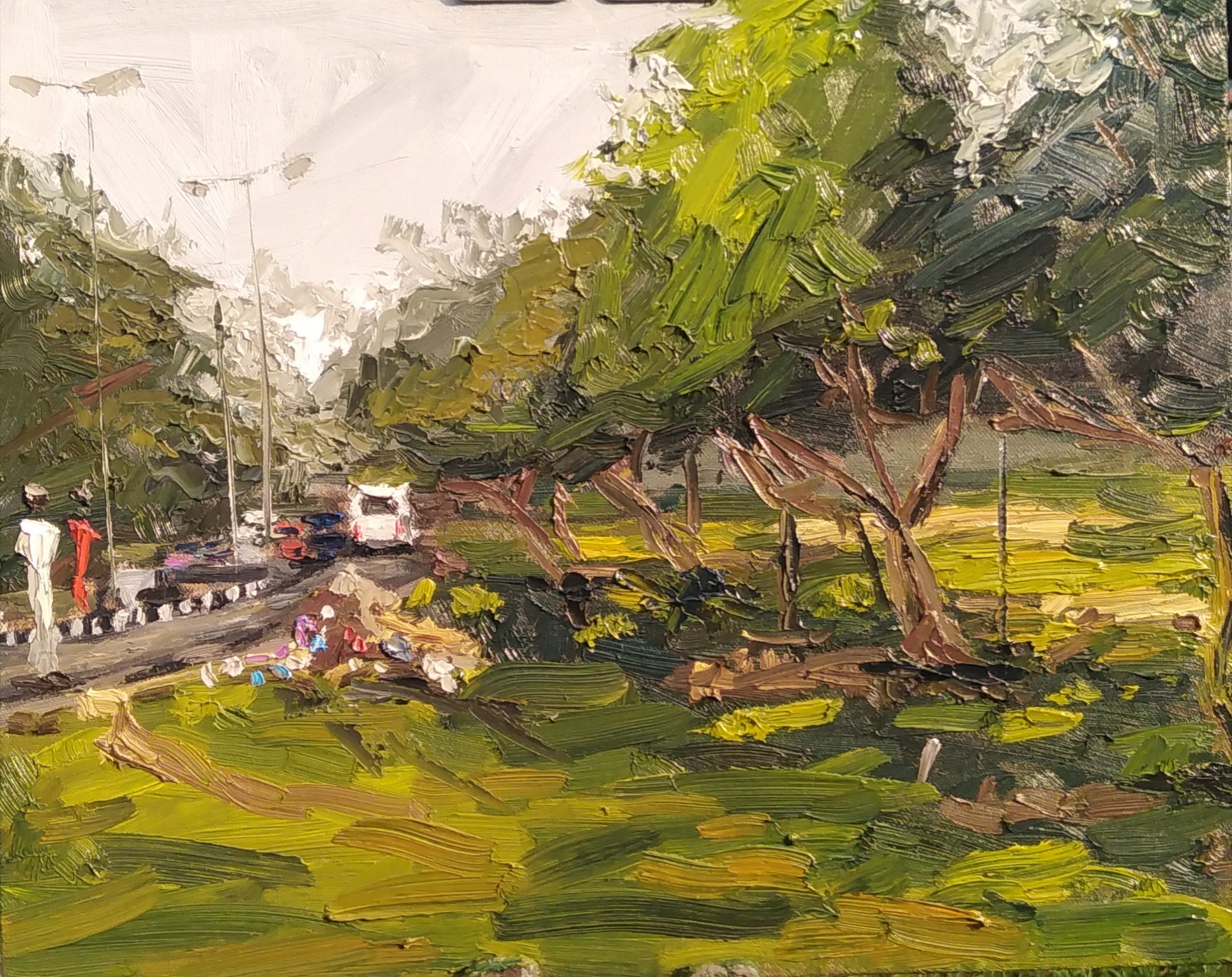
What’s the best advice you’ve heard, or your favorite advice to give?
In my plein air practices, the best advice I’ve heard is that I should keep the fire burning while inspiring others and creating wonderful memories. My favorite advice to anyone, creative or not, is to not stop doing things that make you happy and other people happy.
What else would you like for others to know about you and your art?
My art is how I fit into the environment and society. It is my own way of speaking out loud. Through my art, I create memories not only for me, the artist, but also for the audience as well. We live in tough and changing times that leave pain and anxiety in our hearts. Through my art, I heal mine and my audience’s souls.
(Follow Edak Young on Instagram)
Visit EricRhoads.com to find out all the amazing opportunities for artists through Streamline Publishing, including:
– Online art conferences such as Plein Air Live
– New video workshops for artists
– Incredible art retreats
– Educational and fun art conventions, and much more.
> Subscribe to Plein Air Today, a free newsletter for artists
> Subscribe to PleinAir Magazine so you never miss an issue

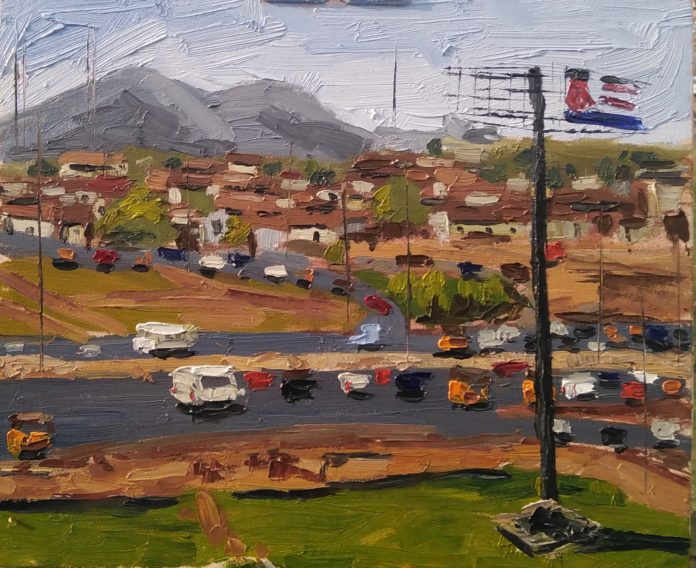

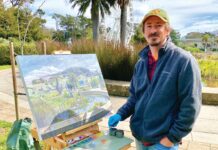
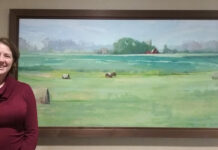
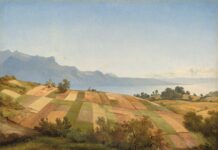
Find it interesting to be a part here
Thank you Cherie for bringing Edak to the attention of the plein community! You asked wonderful questions and she delivered amazing answers about the heart and soul of creativity! Such a joy to see this wonderful artist spotlighted!
Well done Edak!! Your paintings are embedded with thick strokes.